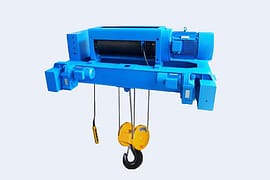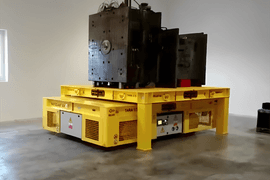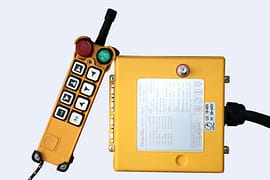An Entire Aluminum Gantry Crane: What Makes It Lightweight Enough
There are many reasons aluminum works so well for construction, manufacturing, and HVAC applications: flexibility and durability. But, what makes it lightweight enough that one worker can disassemble and transport an entire aluminum gantry crane, and yet strong enough for that same gantry to lift up to three tons?
What’s so great about aluminum£¿
Aluminum. It’s remarkable for its low density and natural ability to resist corrosion. It’s also relatively soft, durable, lightweight, ductile, and malleable, with the ability to reflect visible light and even conduct electricity. But, what makes it so useful for so many industries is that it’s easily machined, cast, drawn, and extruded. And, depending on how it’s treated or tempered, aluminum alloy can be used to do pretty incredible things.
Aluminum alloys are used to engineer millions of products around the world due to their high strength to weight ratio. But, pure aluminum metal is much too soft to manufacture industrial supplies and equipment. The proper mix of alloys (two or more metals mixed together to change the characteristics of the aluminum) and specific tempering results in a material that can be used to make lightweight cranes with awesome lift potential.
DGCRANE constructs its aluminum systems and parts by extruding 6061-T6 (a particular type of tempered aluminum alloy) in long cross-sectional shapes (tubes) that are pushed through a shaped die. There’s a lot more to it than that, but no matter how you shape the aluminum, it’s certainly capable of doing pretty incredible things.
WHO’S BUYING THIS STUFF, ANYWAY?
YOU MIGHT JUST BE SURPRISED!
What is the?Aluminum Gantry Cranes used for?
HVAC, construction, manufacturing, and power and electric companies often use aluminum products like DGCRANE Aluminum Gantry Cranes. The HVAC industry in particular is a big buyer of aluminum products from DGCRANE, mainly because of their need for flexible and portable equipment that they can easily transport from one job site to another. But, among the crowd of HVAC specialists and construction workers there’s always a unique application floating around out there, and The Metropolitan Museum of Art is one of them. Museum Curators are actually using a DGCRANE Aluminum Gantry Crane for one of the most unique applications imaginable: photographing Art¡ªvery, very old Islamic Art.
Among their many collections of eclectic and beautiful Islamic pieces, the museum holds more than 450 Islamic carpets¡ªthe largest collection in the United States.?With such a large collection of fine carpets, the Curator for the Islamic Art section of the Metropolitan Museum was concerned about compromising the integrity of the handmade pieces. Curators worked with their photography studio to come up with a solution that would allow them to display the rugs digitally so as to avoid any further degradation to pieces.
Although these carpets are handmade with the type of durability that can¡ªand has¡ªwithstood hundreds of years of handling, the aging process has taken a toll on the craftsmanship that the museum so desperately wants to preserve.
That’s why Barbara J. Bridgers, General Manager for Imaging and Photography at the Met, decided to create a digital archive of their Islamic rugs using high-resolution photography. This would enable careful inspection of each and every weave, stitch, and tiny detail of their more than 450 Islamic rugs without ever having to handle them in person. With the help of her Chief Photographer, Joseph Coscia, Jr., Barbara came up with a plan to bring their Islamic rug digital archive to fruition. It required a careful, exact operation in order to successfully record and photograph sections of each rug and assemble them using Photoshop. It was a major undertaking, and photographers at the Met realized that they faced one problem: Photographing 450 rugs by hand using exact measurements and with careful precision would be extremely time consuming and impractical. So, after some careful consideration, Barbara reached out to a local DGCRANE Distributor to inquire about a flexible, exact, and lightweight material handling system that could be completely customized to help them photograph detailed sections of the rugs with perfect precision.
The system needed to travel easily without wavering or skipping along the track, which required smooth, meticulous movement along a straight path. The distributor recommended a one-ton, track-mounted Aluminum Gantry Crane with V-Groove casters for accuracy and smooth travel. The gantry crane was to be installed in their photography department, where photographers are in charge of fine editing and the production of large format fine art prints. In the case of the Islamic Rugs, they needed something a little extra to ensure that the digital archive was high-resolution and detailed enough to zoom in for close and careful analysis of the artists’ incredibly detailed hand-stitched work.
The one-ton Aluminum Gantry Crane was the perfect solution to ensure smooth travel over a fixed-path, and DGCRANE was able to customize the system to their exact specifications. In order to digitally capture the rugs, photographers used a custom-built camera rig, which was attached to the gantry crane. The museum fastened an H2D multi-shot camera to the top of the crane that provided four shots of each section and blended together all the images for a perfect representation of each square. The sections were laid out with careful precision using lasers that projected a grid from the legs of the gantry. This allowed the camera to take accurate photographs of each square section.
The crane traveled across 60-feet of V-Groove track, stopping from one tiny section to another, to snap multiple shots of each square. The grid provided exact measurements, and the gantry traveling along the fixed path ensured flawless movement from one square to the next. Once the entire rug was photographed in sections, the images were transferred to a computer in the same room, where their photography team stitched the pieces together using Photoshop for an exact replication of each rug in flawless detail. Once the rugs were photographed using the high-resolution camera, they could be digitally archived to avoid handling and further damage to the ancient artifacts.
The digital archive of Islamic rugs is now on display at the Museum and portions of it can be viewed online by visiting the Islamic Art section of the Met’s website. Preserving the artwork and documenting the rugs in sections was a huge undertaking. But, with the help of their Aluminum Gantry Crane from DGCRANE, they were able to complete the digital archive quickly and effectively to ensure the integrity of these famous rugs for centuries to come. I suppose it doesn’t matter what you’re using the product to do, as long as you know it’s built to do the best possible job and last as long as possible. If Curators at the Metropolitan Museum of Art are using an Aluminum Gantry Crane to capture precise images of ancient art, it¡¯s quite possible that DGCRANE products are being used to do even more incredible and unusual things out there.

























































































































